The following letter, to commemorate the NJAC-led “March to Caroni” for racial unity on 12 March 1970, was sent to Wired868 by NJAC executive member and former People’s Partnership minister Embau Moheni:
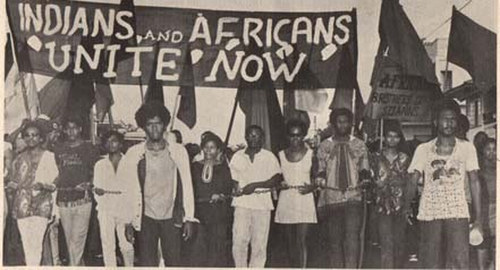
(Courtesy Embau Moheni/NJAC)
The period of February 26 to April 21 in 1970 marks one of the most momentous periods in our nation’s history.
For 56 days, Makandal Daaga—then Geddes Granger—and the National Joint Action Committee (NJAC) led thousands of people daily on demonstrations to every part of Trinidad and Tobago with the rallying cry of “Power to the People.” It was a movement for true independence.
Daaga recognised that having a national anthem, national flag and national parliament did not guarantee true independence. He knew that the old colonial institutions, which were built to serve the European colonisers—England, France and Spain among others—had to be removed for freedom to be achieved.
The old institutions imposed by our European ‘masters’ to serve their interests had oppressed our people for hundreds of years. There was a call for new institutions—whether economic, educational, cultural, social or political—which could reflect the true needs of our people, after hundreds of years of slavery, indentureship and colonialism.
Our nation needed institutions which could assist in their quest to take control of their own lives and give meaning to independence.
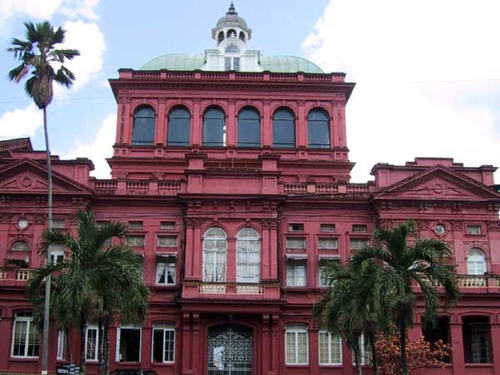
In its quest for people’s power, NJAC recognised that national unity was absolutely essential for true independence. From the very outset, the banners at the head of the demonstrations read “Indians and Africans Unite Now.” This climaxed in a call for National Unity on 12 March 1970.
Today, 12 March 2016, marks the forty-sixth anniversary of that most historic day in 1970, when the National Joint Action Committee (NJAC), under the leadership of the Chief Servant Makandal Daaga, led what has come to be known as the “March to Caroni” for national unity.
The fact of the matter is, that the march went far beyond its intended destination, Caroni, and culminated in a twenty-six mile hike all the way down to Couva. Before the sound systems fell silent late into the night, over forty thousand persons had participated in a very unique, unparalleled and most courageous initiative towards national unity.
Human relations in the 1960’s had been dominated by very narrow-minded and self-destructive ethnic divisions which had fragmented the society and all but tore our nation apart.
In this environment, people’s humanity was being lost at the altar of the political expediency of race politics. Even as Trinidad and Tobago emerged to independence, the African and Indian communities were being misguided by the major political parties of the day, so that great hostility developed between the two major races—the Africans and Indians.

The idea of seizing the wonderful opportunity provided by independence to build a united, strong and progressive nation was sacrificed for cheap political mileage.
In this context, NJAC’s leadership was determined to transform the existing antagonisms and build a bond of unity, which it saw as a prerequisite for the building of a strong nation.
In this thrust, NJAC gained mass support from the population which knew instinctively that the politics of race was not the way to go. Thousands of people joined this call from NJAC to re-define independence in terms of the unity of all sectors of the society as a requisite for the building of a nation.
The population welcomed this national call from NJAC to rise above the politics of race and spite of the 1960’s and accept the common purpose of building a nation together.
The “March to Caroni” was also a commitment to create a new self-image in keeping with the independent status of our young nation. Between 1962 and 1970 there was no concerted effort at restoring the dignity and sense of humanity of a population that had suffered deep psychological wounds from slavery, indentureship and colonialism.
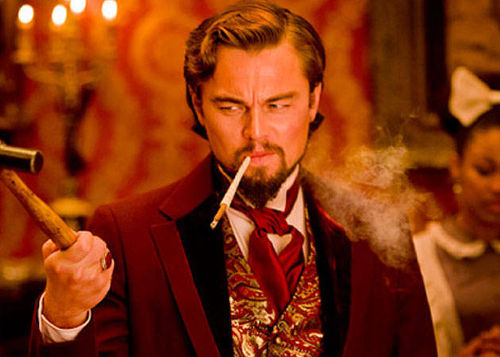
(Copyright Django Unchained)
It must be remembered that during this period our people were made to believe that we were either the property of the colonial masters or at best inferior beings whose sole purpose was to serve the colonial interests. Colonialism meant the imposition of an inferiority complex which had a most negative effect on our self-confidence and esteem.
In this setting, the “March to Caroni” sought to initiate the process of restoring our confidence in our own worth and value.
The idea of a march to unite the two major races in the country caused much alarm and consternation among those who had a vested interest in maintaining the divisions in the society.
Rumours were spread among the Indian population in Caroni that the demonstrators were coming with violent intent to rob them and rape their women.
Archbishop Pantin who had agreed to join with the demonstrators changed his mind, with a heavy heart, after being pressured from different quarters, including the then Prime Minister Eric Williams.
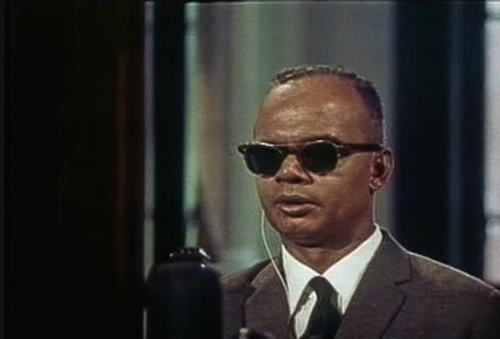
(Courtesy Information Division)
On the evening before the demonstration, the police advised that it be called off. The oppressive forces of the day did everything possible to prevent the march.
Notwithstanding all predictions about impending violence on the march, the newspapers had to report on the following day that the march was orderly with the headline in the Guardian being: “March to Caroni incident-free.”
The Indian population welcomed the demonstrators in a massive show of unity, solidarity and love. Demonstrators were offered water, juice, oranges and doubles. School children eagerly lined the streets with flags to urge on the demonstrators.
At the end of the march, a meeting was held at the Couva Car Park which went late into the night. Due to the late end of this meeting, demonstrators could not get transport to go back to Port of Spain.
The Indian residents responded by opening their homes to the demonstrators from north Trinidad, who were total strangers and kept them overnight. Such were the bonds of love and togetherness that were being established for the unity and development of the nation.
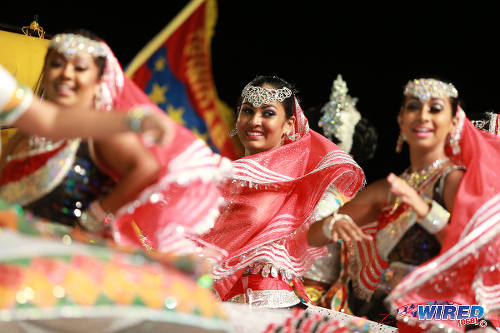
(Courtesy Allan V Crane/Wired868)
Also of great significance on this day was the holding of a People’s Parliament at the Couva Car Park after the demonstration. The People’s Parliament is an institution which grew out of the movement of the people led by NJAC in 1970. It is an institution which gave the people the opportunity to meet in different communities across the country to discuss issues affecting their lives and come up with solutions and implement them.
One such parliament was held at the Couva Car Park on the night of the 12 March 1970. A major decision was taken by the thousands of people present that the British ownership of the sugar industry—under the control of the Tate and Lyle company—had to be ended.
This most important resolution passed by the People’s Parliament led to the departure of Tate and Lyle from our shores and the birth of Caroni Limited.
The “March to Caroni” symbolised NJAC’s key objective of creating the conditions for a new society built on the respect for all peoples. To the movement of the people in 1970, “human dignity” was more than a slogan. It grew out of a commitment to the principle of equality and a recognition of the right of the individual to participate actively in the determination of his or her own destiny.
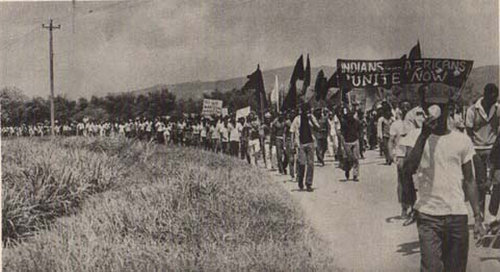
(Courtesy Embau Moheni/NJAC)
Race and ethnicity were no longer to be determining factors in people’s treatment and in their access to opportunities. If we had to build a nation, we would do it together, moving forward as one people in pursuit of a better life for all citizens.
Without doubt, the “March to Caroni” was the single most important event in our people’s aspirations and intent to build a united and strong independent nation. It was a moment of healing, when the antagonisms and bitterness of that political period were set aside in the interest of human dignity and progress.
It was indeed a most decisive historical moment to which the population responded positively with the hope and resolve to give new meaning to their lives and their nation.
What is also noteworthy is the fact that a state of emergency was declared on the very day that the Indians decided to make a return march to Port of Spain. Having received the extended hand of brotherhood from the Africans who marched to Caroni on the 12 March, the Indians decided to return the favour by marching to Port of Spain on the 21 April 1970.
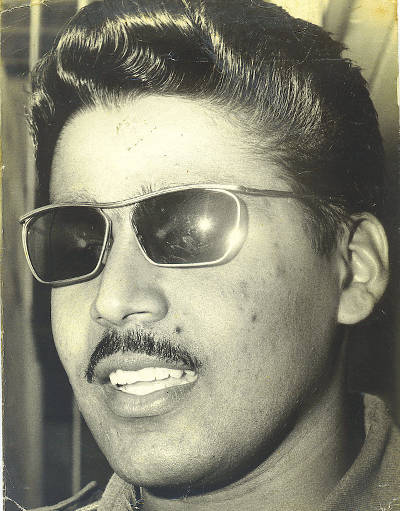
Shah, a former lieutenant, led 300 troops in a mutiny at Teteron Barracks during the Black Power revolution of 1970.
However an emergency was declared in the early hours of the morning to prevent this demonstration from happening. The Indian masses, however, were determined to march to Port of Spain, but were met with police intervention and widespread brutality.
The yearnings of the population for unity came face to face with forces that preferred a divided and weak population.
There are lessons to be learnt from the movement of 1970.
First is the reality that there are individuals and institutions within the country willing to act to prevent unity, even if this destroys progress and stagnates our nation.
Secondly, we must come to the appreciation that race politics does not serve the best interests of the people or our nation. This brand of politics is a tool that is used to keep the population weak and therefore easy to control.

(Courtesy Allan V Crane/Wired868)
Most importantly, we saw very clearly that the vast majority of the population long for unity. Once given the opportunity the people are more than willing to build their communities and nation in unity and harmony.
Let us therefore answer the call of this great moment in our nation’s history, “the March to Caroni”, and accept the challenge of national unity.
Embau Moheni is the Deputy Political Leader of the National Joint Action Committee (NJAC) and Chairman of the National Action Cultural Committee (NACC). He is a former Minister in the Ministry of National Security under the People’s Partnership Government. He was twice arrested as a teenager during the uprising of the early 1970s.
 Wired868 Wired868 for smart sport news and opinion
Wired868 Wired868 for smart sport news and opinion

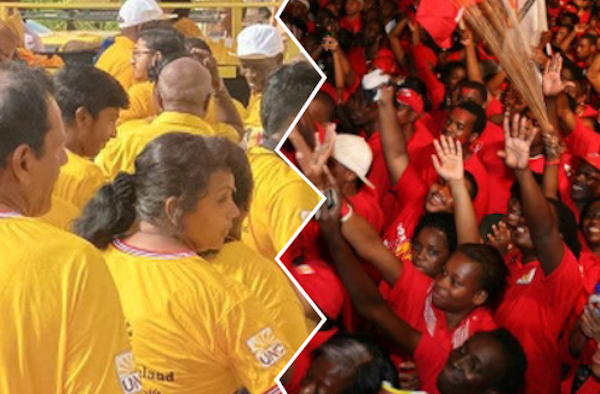
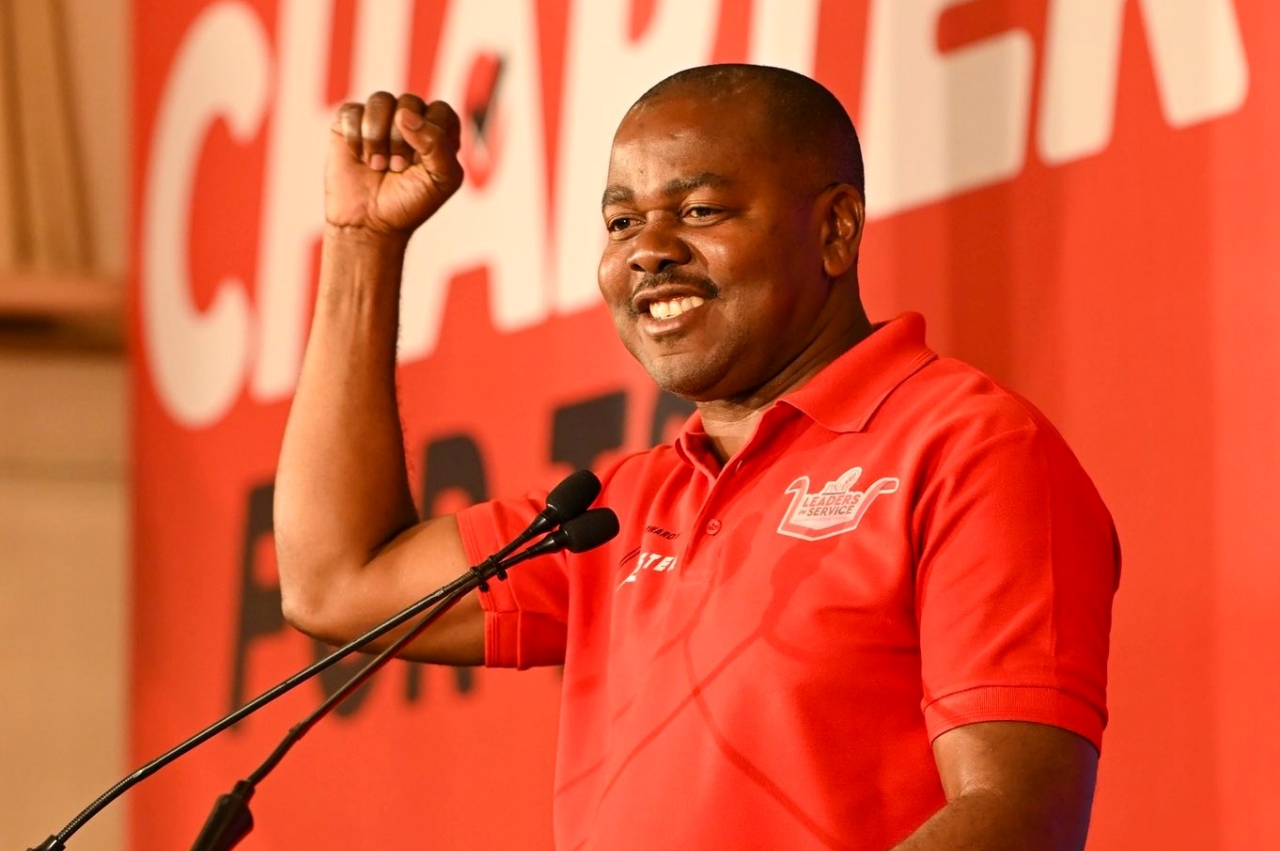
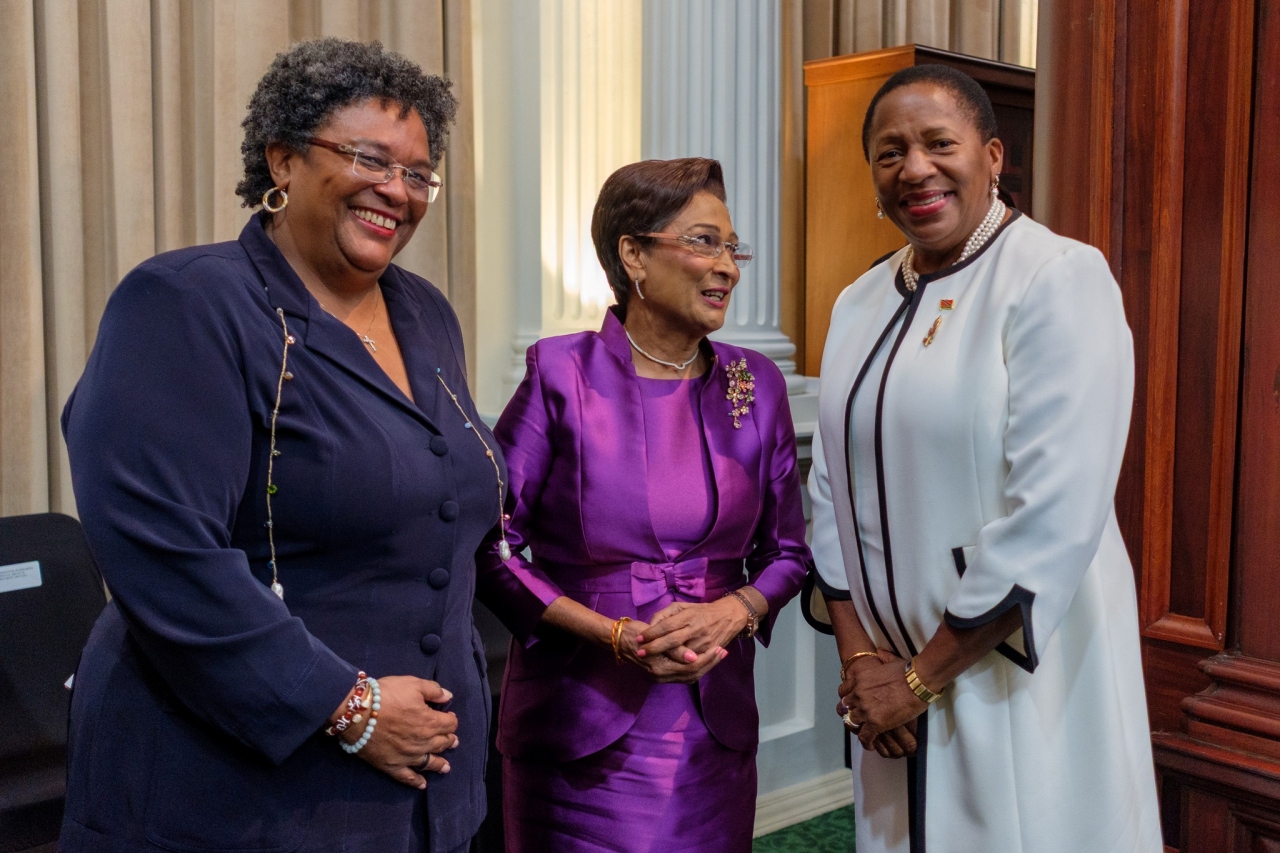



And then he lost his stones by joining with the People’s Pirateship.
It may not be a history that the good doc would want told. It is at this point that the PNM brokered a deal with the Syrian community. And it is arguably when they started funding the party. Dr Williams was not a very popular guy then. So instead of trying to understand what was going on, he opted for self-preservation and made alliances with our burgeoning capitalists, and in return he promised to protect them from the unruly Blacks. It is partly why we are where we are today with business and politics so intricately tied together.
Source?
The February Revolution (2014) – Dr Brinsley Samaroo (Black Power in the Caribbean edited by Kate Quinn, University of Florida Press)
That’s one among many, but it’s the most recent publication.
Thanks. Brinsley discusses the Syrian deal?
Rhoda Bharath he actually interviewed Ferdie Ferreira who recounted the details.
Denis Pantin also talks about the “second cabinet” in a study referring to the group of trusted people including business people whom Williams counted on for advice at the time.
Thanks.
History is a dangerous weapon against politicians.
Against any group in power.
1970 was a long time ago. Do you think the circumstances are same now?
Yeah I remember because I was one the beneficiaries of that march. We were among the first set of black children from depressed areas to be accepted into the hallowed halls of the prestigious colleges. I was proud and became part of the struggle to empower others from the same environment I grew up in. But I became hurt and ashamed when I see my brothers ‘ eating ah food’ and accepting the role of a non entity within a regime that was deliberately ignoring and humiliating the very people u say u represent…………. and u did nothing!! So I should ask u now, what are u celebrating exactly?
He eat ah food and forgot all about the black ppl.
When Dr. Rowley issued his dictum to the Minister of Education that his first priority must be to teach the history of TT in school, I wonder if he was referring to this period which was arguably one of the most important in our brief history.
Sounds like it might have been a symbolic triumph at the time. Or even encouragement for unity.
Even if it was a baby step in the end.
Ppl should read up on the rich heritage Trinidad has in the labour movement-we were in the forefront and set the pace in the caribbean. It is interesting and exciting. I hate how labour day has turned into just another day to lime, while the great sacrifice our labour leaders made goes unacknowledged and unnoticed. U think ur employer just likes u and pays u for an 8-hour work day, etc?
Is a wonder he didnt catch a stroke doing this.
Talk yuh mind Rhodes. Talk yuh mind. ?
Yuh know me…i does have problems articulating.
I wonder how that worked out
What did they achieve?
Burn some calories?
maybe?
March in futility. Better they had planted a field of Topi Tambu.
It was a big deal. The ‘powers that be’/ the Establishment were genuinely scared of unity across the racial divide.
Really?
Raffique Shah can you fill in the blanks with the other prominent groups and activists involved in this march that may not have been mentioned?
Excellent point Stephen. And you’re very right Sav. Pettiness and small mindedness keep us in chains.
While politicians and lackeys from both sides use race as an excuse to exploit State resources.
“At the end of the march, a meeting was held at the Couva Car Park which went late into the night. Due to the late end of this meeting, demonstrators could not get transport to go back to Port of Spain.
The Indian residents responded by opening their homes to the demonstrators from north Trinidad, who were total strangers and kept them overnight. Such were the bonds of love and togetherness that were being established for the unity and development of the nation.” This is what I grew up knowing, not what we have today.
How would he describe how things turned out knowing we sent the Colonisers packing and we can’t manage our own affairs to this day?
Something failed. Something went wrong. I really never identified race, really only if someone asked me to describe someone. I grew up, and went to school, with all and judged all by their character. Still do.
Same with me Damian, it seems as if social media has brought out the devil in some who don’t know you but are quick to judge.
Something failed. Something went wrong. I really never identified race, really only if someone asked me to describe someone. I grew up, and went to school, with all and judged all by their character. Still do.
I think as children we are all thought a bit about prejudice if we are honest. And we also interact with people from outside of our group too.
Then, it is a matter of what sticks and how open minded we are. Or what our experiences were.
I think! I have no letters behind my name to speak definitively on this topic. 🙂
You know living in the UK I never saw myself as “Indian” but West Indian and had to correct people at times. Even black british people were surprised when I open my mouth
I believe that parents play a critical role here. They define what is acceptable, and not acceptable. Behaviour in a particular manner towards someone can either be reinforced or stamped out at an early age. I treat my elders, regardless of race or creed, in a particular manner because of how I was brought up (I believe)
The only way to tell a Trini is our accent. Our look is so diverse. I was forever being mistaken for an Ethiopian in UK. Some would just walk up to me at a train station and try to ask me stuff in their native language and I would be clueless.
I think it all depends on where you live Lasana. As children we had a good mix of friends and we would all be in each others houses for birthday parties or whatever..and I am thankful to still have some of rhose friends in my life up to today.
True. Try looking for Roti skins in Glasgow in the ’80s!! LOLOL!! “What the h… is a CHAPATI??”
Someone tried to speak to me in Gujrati or some other language and I had to tell her speak English you live here. But she thought because I was Asian looking I should be able to understand her..I steupsed and walked off
Lol. You lived in Glasgow, Damian? I loved there. Much preferred Scotland to England to be honest. Friendlier people and a bit more laidback with mountains to boot. 🙂
I love the Scots, not so much Glasgow tho…esp when I was visiting Chivas in Paisley for work
I spent time in Glasgow, Aberdeen, Dundee and Falkirk. Visited Edinburgh a few times. But I actually lived for about four months in Motherwell.
Lasana, until they had just that extra pint!! I have a “Dougla” friend who visited me (he was studying in Sweden), and he got a bit of a shock on a Saturday night! But you are right. I made some good friends there. Again. I believe how you are brought up, and the general environment in T&T then, allowed me to interact with all sorts. I also made very good friends with the Hong Kong clique. Such was our “blindness” to “race” and physical differences.
Lasana I could tell a Trini from a mile..we have a special look.
Lasana Liburd I would say Eritrean, but still.. 🙂
Not in real life Kala
Kala Ramnath Eritrean? Now I have to use Google. Lol.
Savitri, I know a Trini who had the most hilarious tale in London.
Because he tried asking some “Afro” Londoners for directions and when they heard his accent they thought he was “trying to take the piss.”
He had to plead and convince them that, although he looks white, he really talks like that!
Trini accent almost got him a beating. ???
Oh geez…no!
Funny and nice stories you all ?
I think country life-in the outskirts of Toco, Mayaro, Moruga etc ppl still live like that. There is still a level of trust and community spirit. I am happy I grew up in such a place and in such a time.
Hmmm never heard of this before. Seems like the movement either went totally of course or ideals changed. Seemed like this would have been a great catalyst to solve some of the problems we are facing today. This should be taught in schools including primary school.
It’s simple…in those days…workers were united…because everybody was suffering together-in the cane fields or in oil. Then we started the class war…moved on to race war…cause we got too happy.
Where and why has it all gone wrong??
And spectacularly wrong too. NJAC included.
Yes. Sigh! NJAC included!! “There was a dream once … “
But I haven’t given up though. I never will. And I think that there are people from all races who are not blinded by skin colour and heritage. But still lots of work to be done.
Agreed. I am one, although, it has become harder. So much from those days and the early ’80s has been lost. The dream of Trinidad, and a wider Caribbean as one strong identity, reveling in its unique blend of cultures, music, etc. I watched, for the 3rd time the other day, “Fire in Babylon.” We never identified the players by race or colour. We were one!!
Lasana Liburd great you haven’t given up